Father of our country hoe cakes: George Washington-related concoction is a favorite breakfast
|
Published: 02-20-2024 4:20 PM
Modified: 02-20-2024 6:45 PM |
I appreciate that people who work regular jobs need three-day holiday weekends. For this reason, in 1968, George Washington’s birthday was moved from Feb. 22 to the third Monday in the month.
Sadly, in my opinion, this means that the official celebration of his birthday will never take place on the 22nd. The latest day on which it can fall is the 21st.
I do not work a regular job. Instead, I have five part-time jobs. I seldom go an entire day, let alone three, without working.
Happily, however, I can also take a little time off in the middle of the day on weekdays if I want to.
Three-day weekends are irrelevant to my schedule. I therefore prefer to follow tradition and celebrate Washington’s birthday on the 22nd. Sometimes, like the United States Senate, I read his farewell address to the nation from 1796.
This year, Ben Cardin (D-Md.) will recite the address to his fellow senators. My audience will be a bit less fractured than the Senate: my dog and cat, Cocoa and Rhubarb.
I also enjoy cooking something that will remind me of our first president. One of my favorite Washington-related concoctions are hoe cakes.
I like them so much I put them in my most recent cookbook.
Article continues after...
Yesterday's Most Read Articles
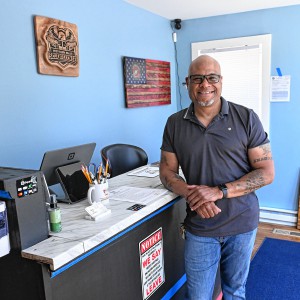 Retired police officer, veteran opens firearms training academy in Millers Falls
Retired police officer, veteran opens firearms training academy in Millers Falls
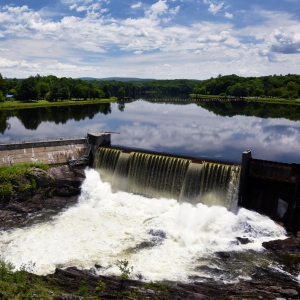 Valley lawmakers seek shorter license for FirstLight hydropower projects
Valley lawmakers seek shorter license for FirstLight hydropower projects
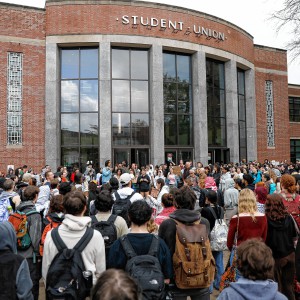 More than 130 arrested at pro-Palestinian protest at UMass
More than 130 arrested at pro-Palestinian protest at UMass
 Baseball: Caleb Thomas pitches Greenfield to first win over Frontier since 2019 (PHOTOS)
Baseball: Caleb Thomas pitches Greenfield to first win over Frontier since 2019 (PHOTOS)
 Real Estate Transactions: May 10, 2024
Real Estate Transactions: May 10, 2024
 As I See It: Between Israel and Palestine: Which side should we be on, and why?
As I See It: Between Israel and Palestine: Which side should we be on, and why?
My New England grandmother and many other northerners traditionally called these treats johnnycakes. They are puffy little pancakes made with cornmeal.
According to the website of Mount Vernon, Washington’s Virginia home:
“General Washington’s typical breakfast has been described by members of his immediate family and several guests. His step-granddaughter, Nelly Custis Lewis, who was raised at Mount Vernon, wrote, ‘He rose before sunrise, always wrote or read until 7 in summer or half past seven in winter. His breakfast was then ready — he ate three small mush cakes (Indian meal) swimming in butter and honey, and drank three cups of tea without cream.’”
The Indian meal (cornmeal) in the hoe cakes came from Washington’s own mill. I visited the reconstructed gristmill a few years ago. The mill and its products showed that Washington was ahead of his time as a southern agriculturalist.
In the 1760s, he changed his main crop from tobacco to wheat. The reasons were threefold.
First, as students of American history know, tobacco quickly depletes nutrients in the soil. Washington was a pioneer in composting and crop rotation, but even so, he must have had trouble with this difficult crop.
Tobacco is also extremely labor-intensive. Indeed, its cultivation is one of the reasons the American South became so dependent on slavery.
It was thus not only soil draining, but soul draining.
Finally, in the 1760s, tobacco from the future United States had to be sold through British tobacco merchants. These traders paid colonial planters in luxury goods rather than cash and could not secure a guaranteed price. Washington was frustrated with this system, in which he generally lost money.
When he changed over to wheat, corn and other diversified crops he was able to sell to more markets, rotate his crops and increase harvests. (Wheat could be planted twice a year.)
In 1771, he added to the profitability of his grains by erecting the mill so that he could sell not just his raw agricultural products but also the edible commodities they became.
The gristmill represented Washington’s middle ground between the stances of Thomas Jefferson and Alexander Hamilton. Jefferson saw the future of American society as mainly agricultural.
Hamilton thought Americans would depend more on finance and industry.
Washington had a clear vision of an American economy that integrated agriculture and industry.
As the interpreters working at the reconstructed mill pointed out when I visited, the gristmill didn’t just represent a brilliant agricultural move on Washington’s part. It also looked ahead to the coming industrial revolution.
The mill itself was a model for its time.
I purchased some of the mill’s yellow cornmeal at the gristmill’s gift shop. I used it to make hoe cakes inspired by our first president’s morning meal.
Hoe cakes supposedly got their name from the fact that enslaved African-Americans (who were usually allocated a ration of cornmeal as part of their diet) would sometimes prepare them on fires using the flat part of a hoe.
The description of hoe cakes on Mount Vernon’s website sounded a bit heavy and gloppy to me. I therefore came up with my own version of the cakes.
My hoe cakes resemble traditional pancakes, incorporating a bit of white flour and using baking powder instead of yeast (which was used in Washington’s original recipe) for leavening.
They taste fabulous alone for breakfast or served in the evening with ham and vegetables.
If you have a dietary objection to bacon fat, you may of course fry them in a little butter instead. The bacon fat is historically appropriate and sinfully delicious, however.
Ingredients:
■¾ cup cornmeal
■½ cup flour
■½ teaspoon salt
■½ teaspoon baking powder
■½ teaspoon baking soda
■½ cup buttermilk (plus a little more if you need it)
■2 tablespoons unsalted butter, melted and then cooled for a few minutes
■1 egg
■Bacon fat as needed for frying
Instructions:
In a medium-size bowl, combine the cornmeal, flour, salt, baking powder and baking soda. Whisk until the mixture is integrated and smooth.
In a small bowl (or measuring cup), whisk together the buttermilk, melted butter and egg.
Make a well in the middle of the dry ingredients and pour in the buttermilk mixture. Stir just until the dry mixture is moistened, adding a little more buttermilk if needed to give the batter the consistency of thick pancakes.
In a heavy frying pan or skillet, heat a tablespoon or two of bacon fat. When it is good and hot, add the hoe-cake batter in little mounds of two tablespoons each.
You may of course make your hoe cakes bigger if you prefer.
Fry for a couple of minutes on each side, adding more bacon fat if needed. Keep finished cakes in a warm oven while you cook their relatives. Make sure the hoe cakes cook all the way through as the batter is thick.
Serve “swimming in butter and honey.” (Actually, they’re not bad plain.) Makes about 15 small hoe cakes or eight large ones.
Tinky Weisblat is an award-winning cookbook author and singer known as the Diva of Deliciousness. Visit her website, TinkyCooks.com.

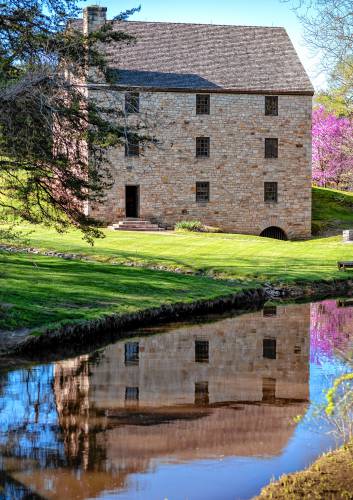
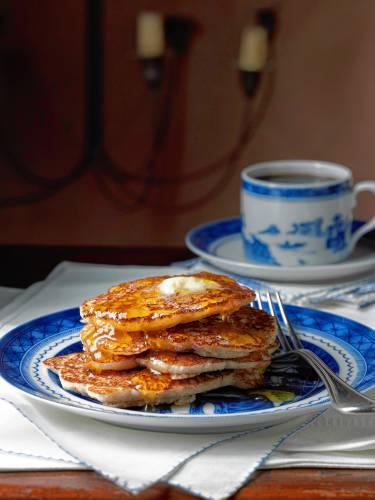
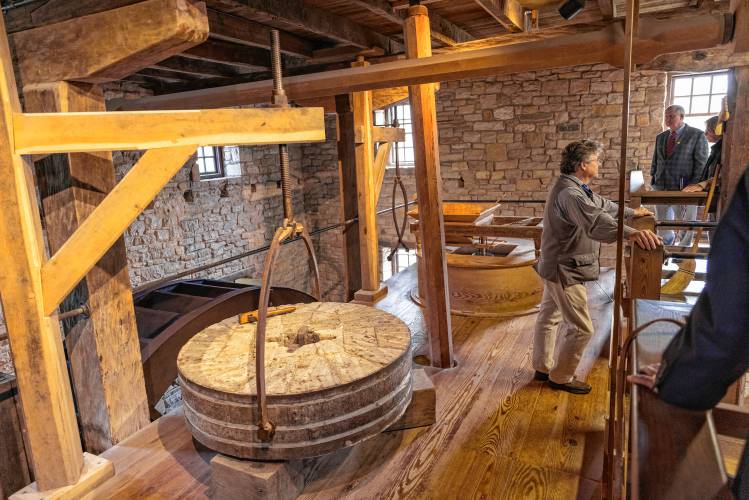
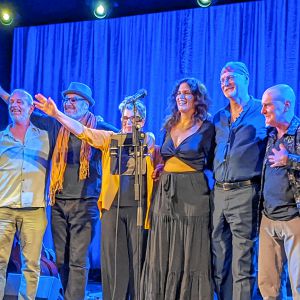 Sounds Local: Joni Mitchell tribute comes to Turners Falls: Big Yellow Taxi to perform ‘Court and Spark’ in its entirety, May 18 at the Shea
Sounds Local: Joni Mitchell tribute comes to Turners Falls: Big Yellow Taxi to perform ‘Court and Spark’ in its entirety, May 18 at the Shea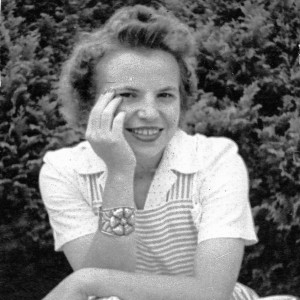 On Mother’s Day, we’ll always have Paris: A crêpe recipe in honor of my French-speaking mother
On Mother’s Day, we’ll always have Paris: A crêpe recipe in honor of my French-speaking mother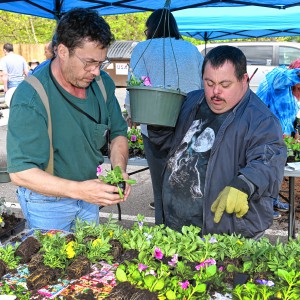 Providing opportunity for people to grow: The United Arc of Franklin County’s annual Gardening with Steve event a highlight of spring
Providing opportunity for people to grow: The United Arc of Franklin County’s annual Gardening with Steve event a highlight of spring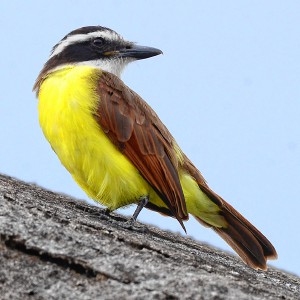 Speaking of Nature: Capturing my Bermuda nemesis: The Great Kiskadee nearly evaded me, until I followed its song
Speaking of Nature: Capturing my Bermuda nemesis: The Great Kiskadee nearly evaded me, until I followed its song
